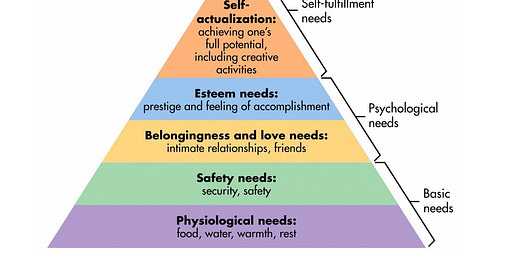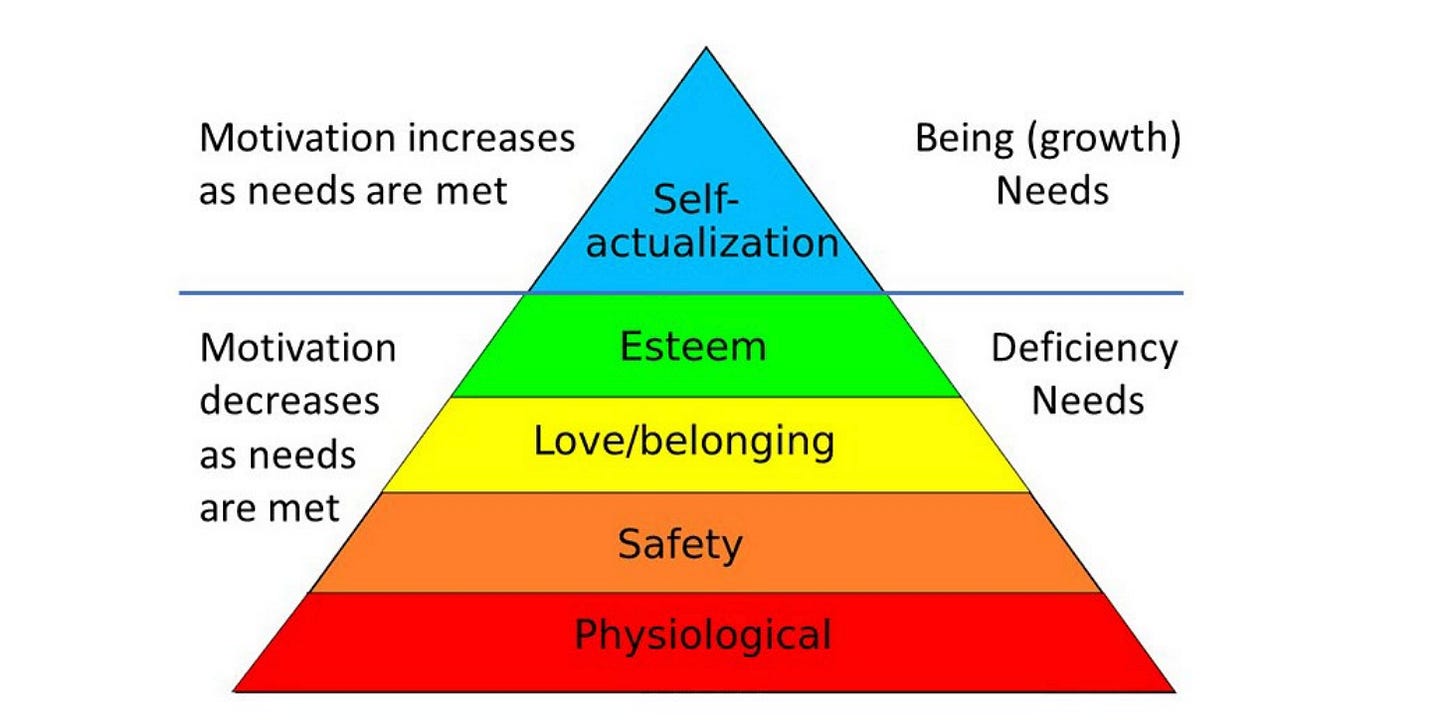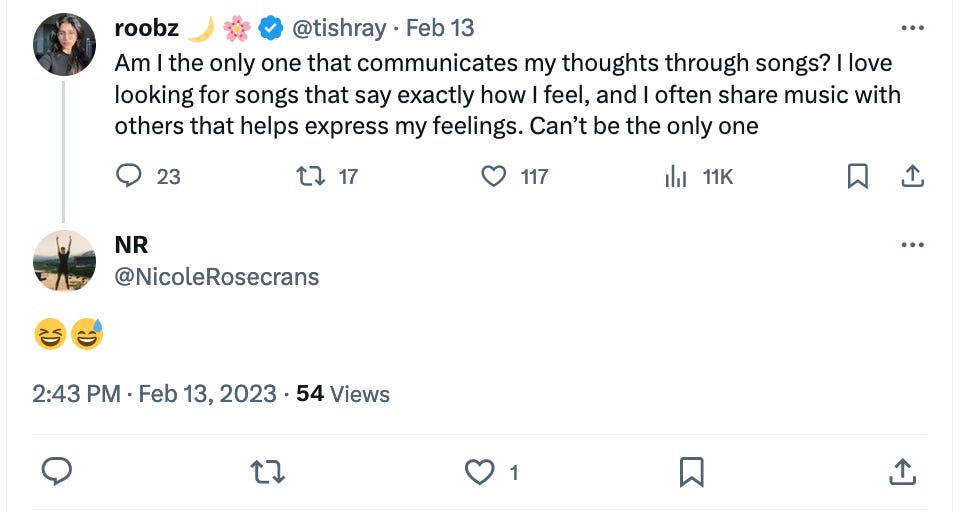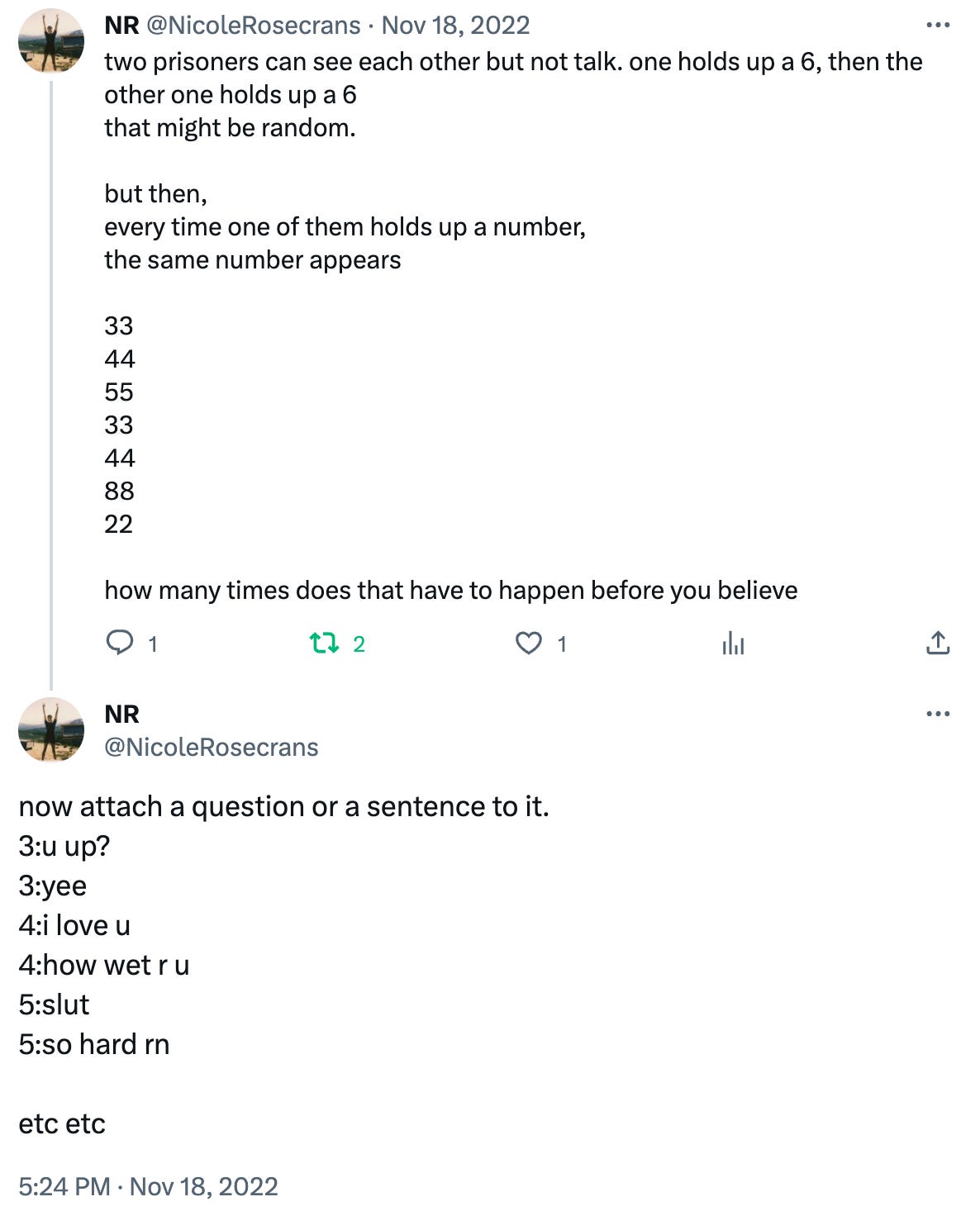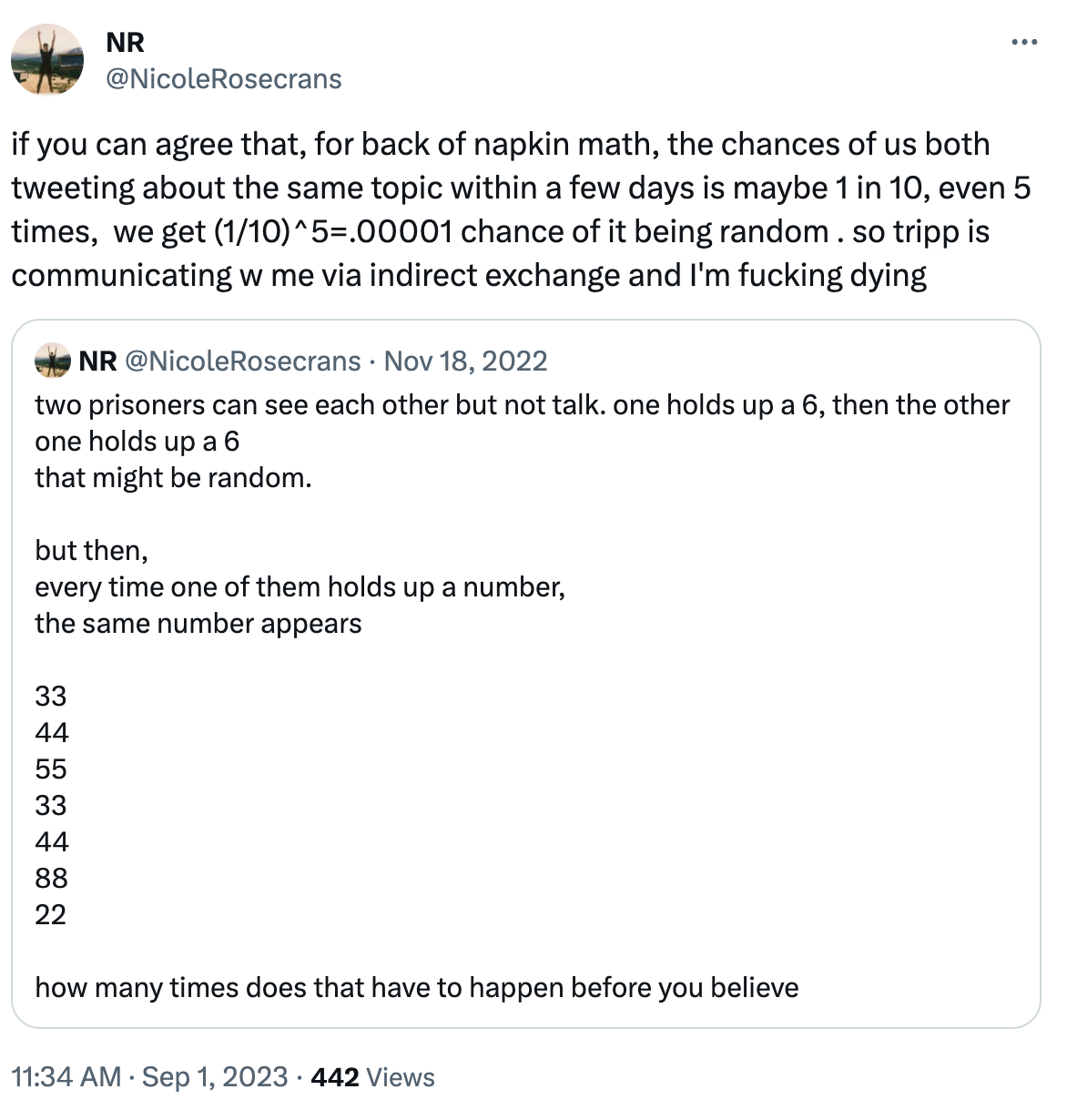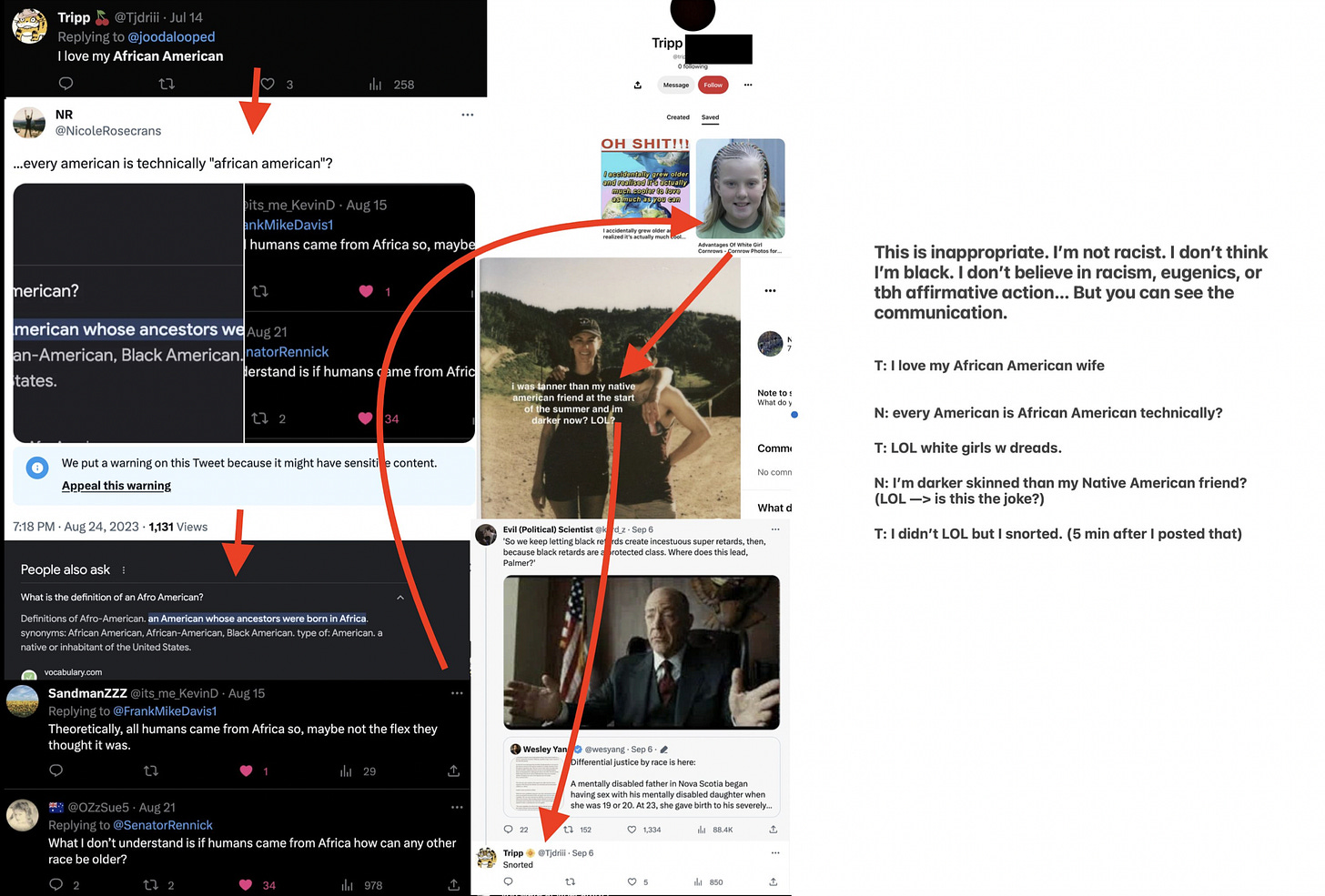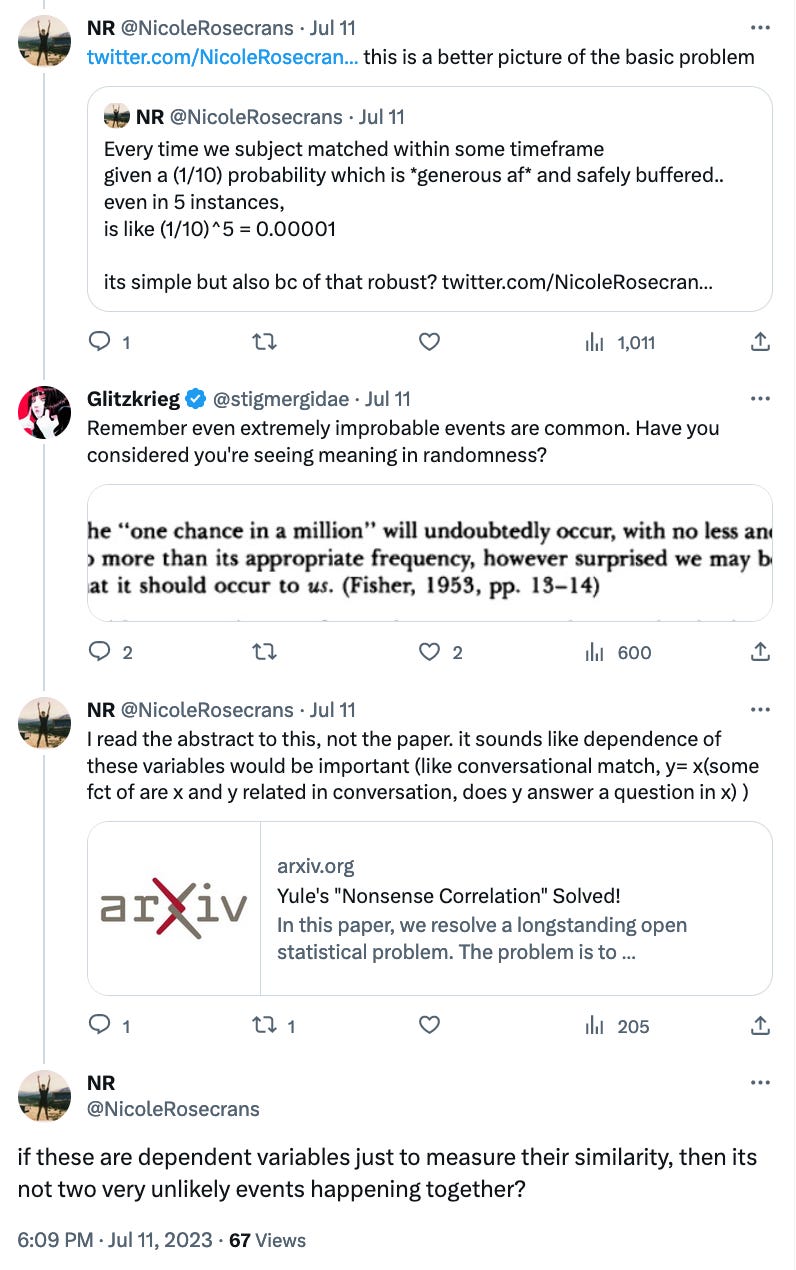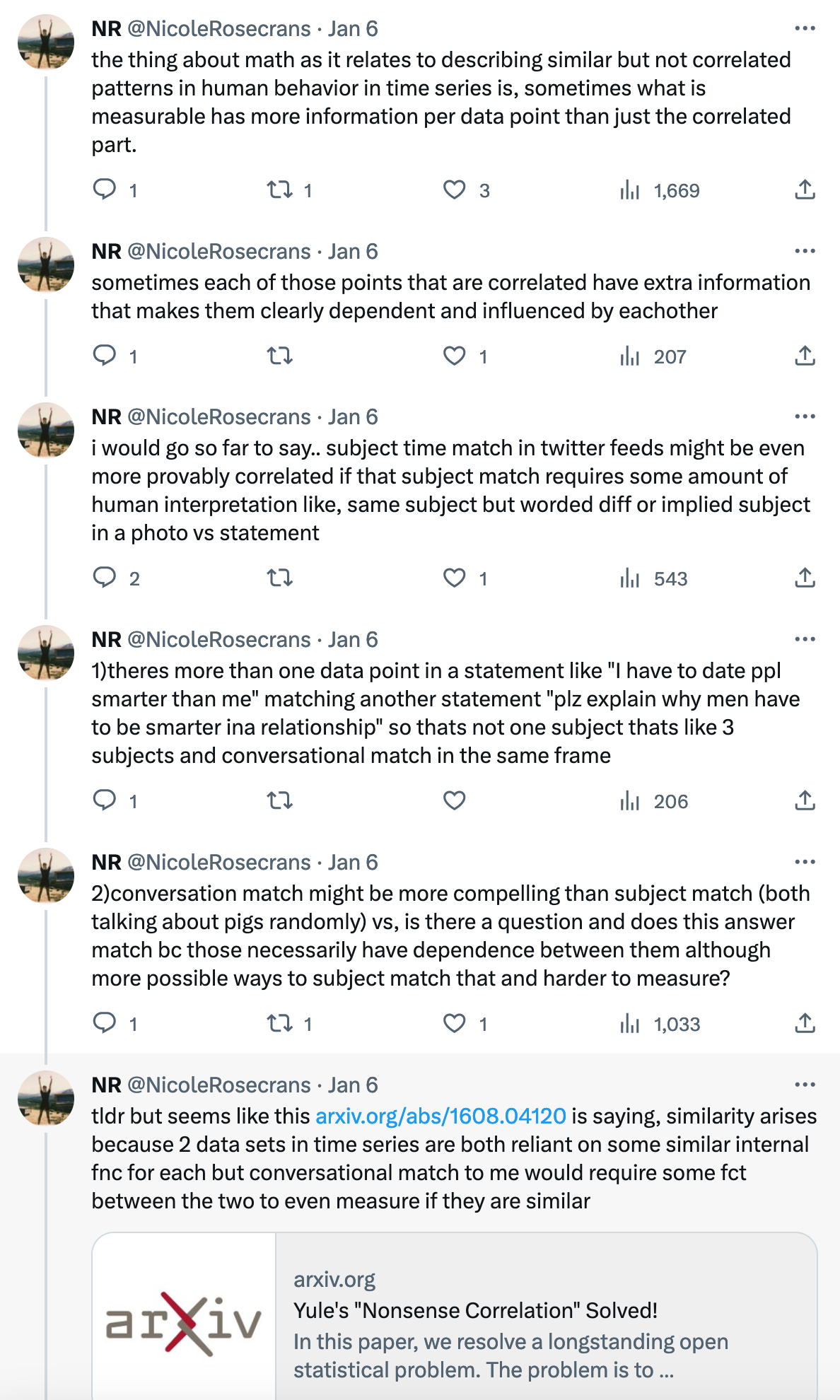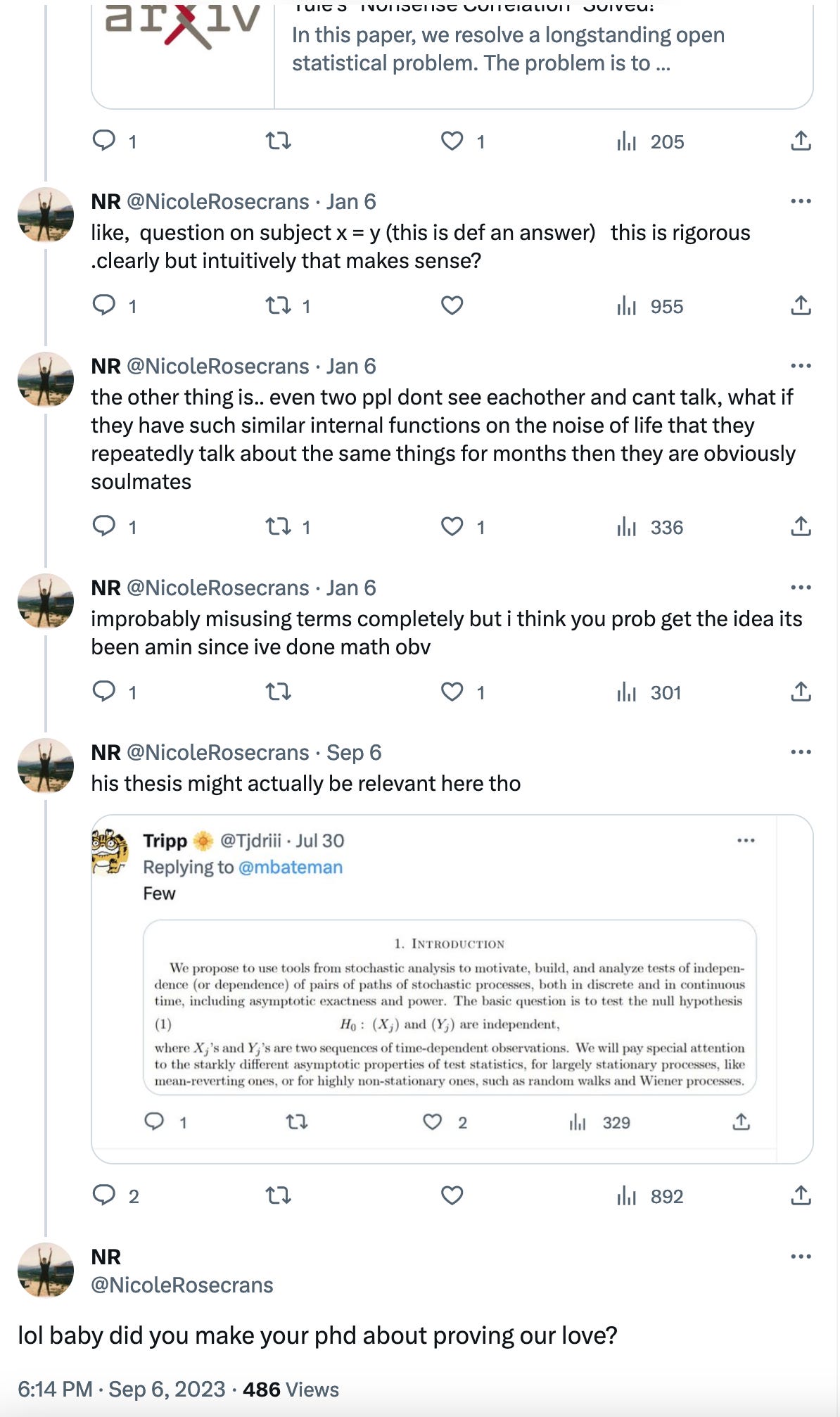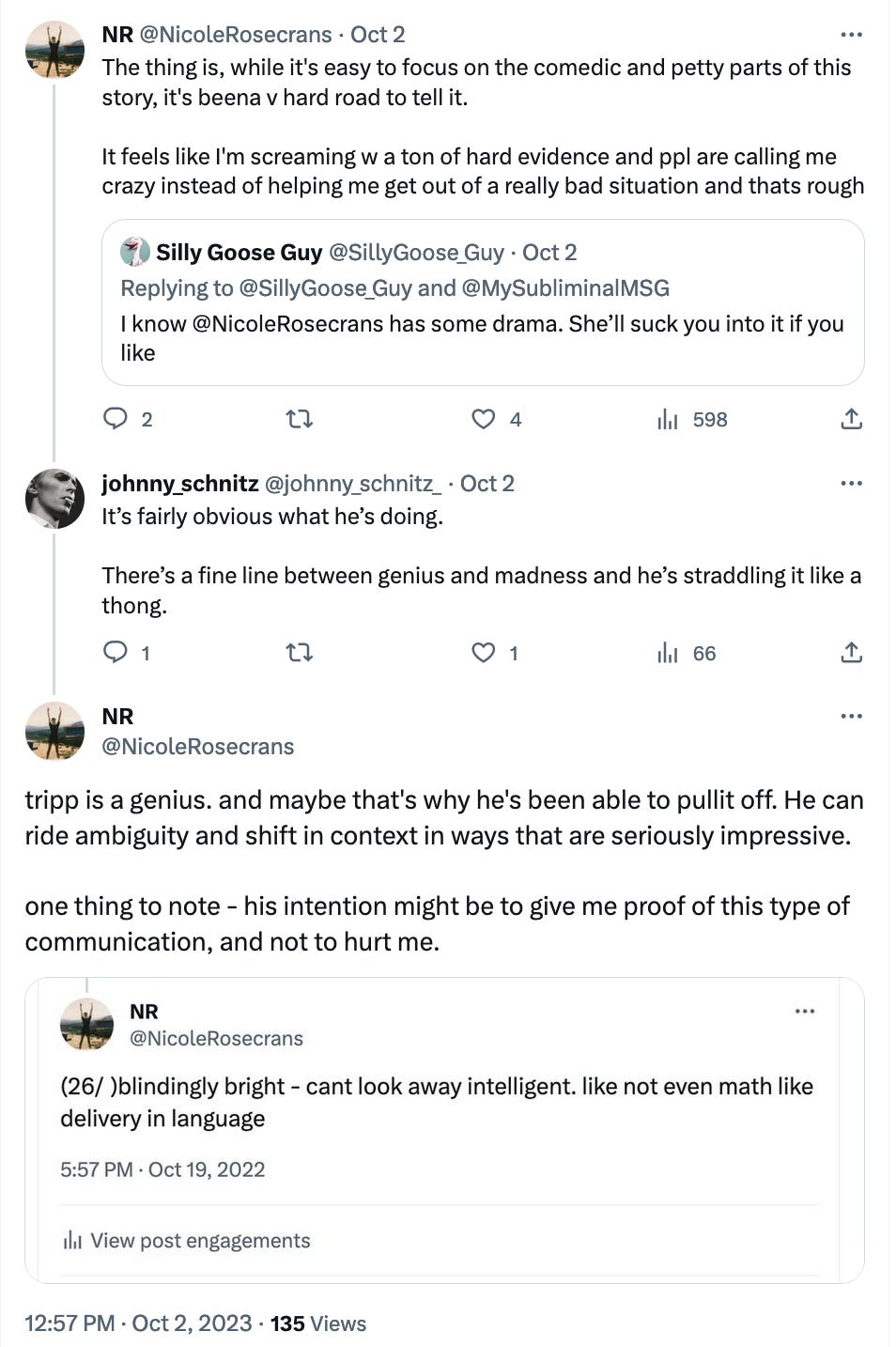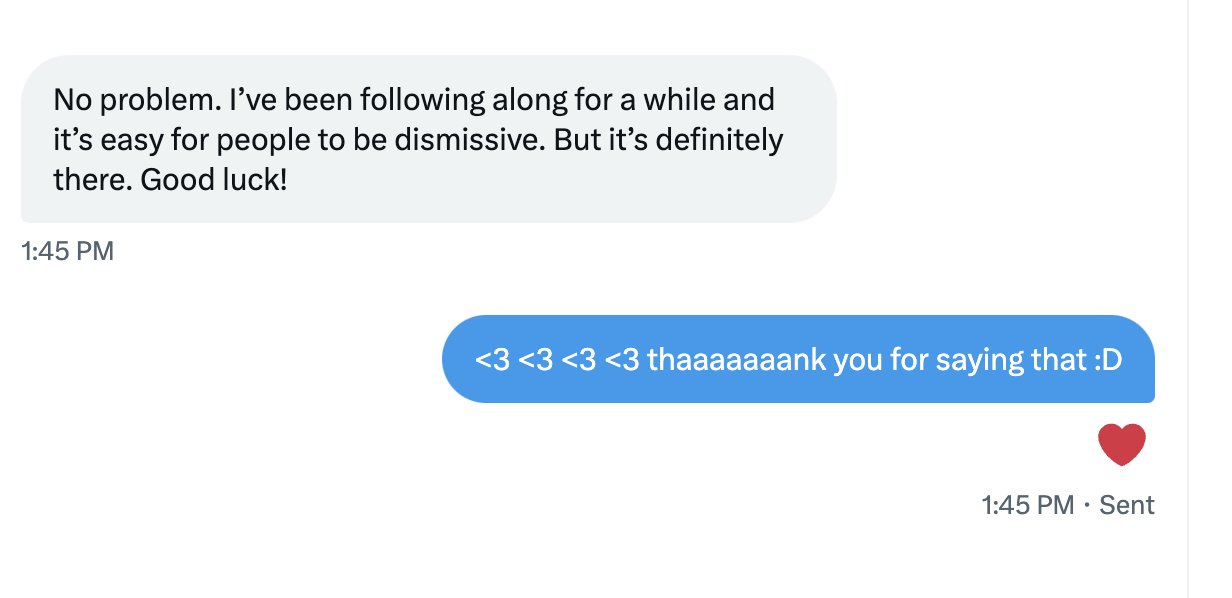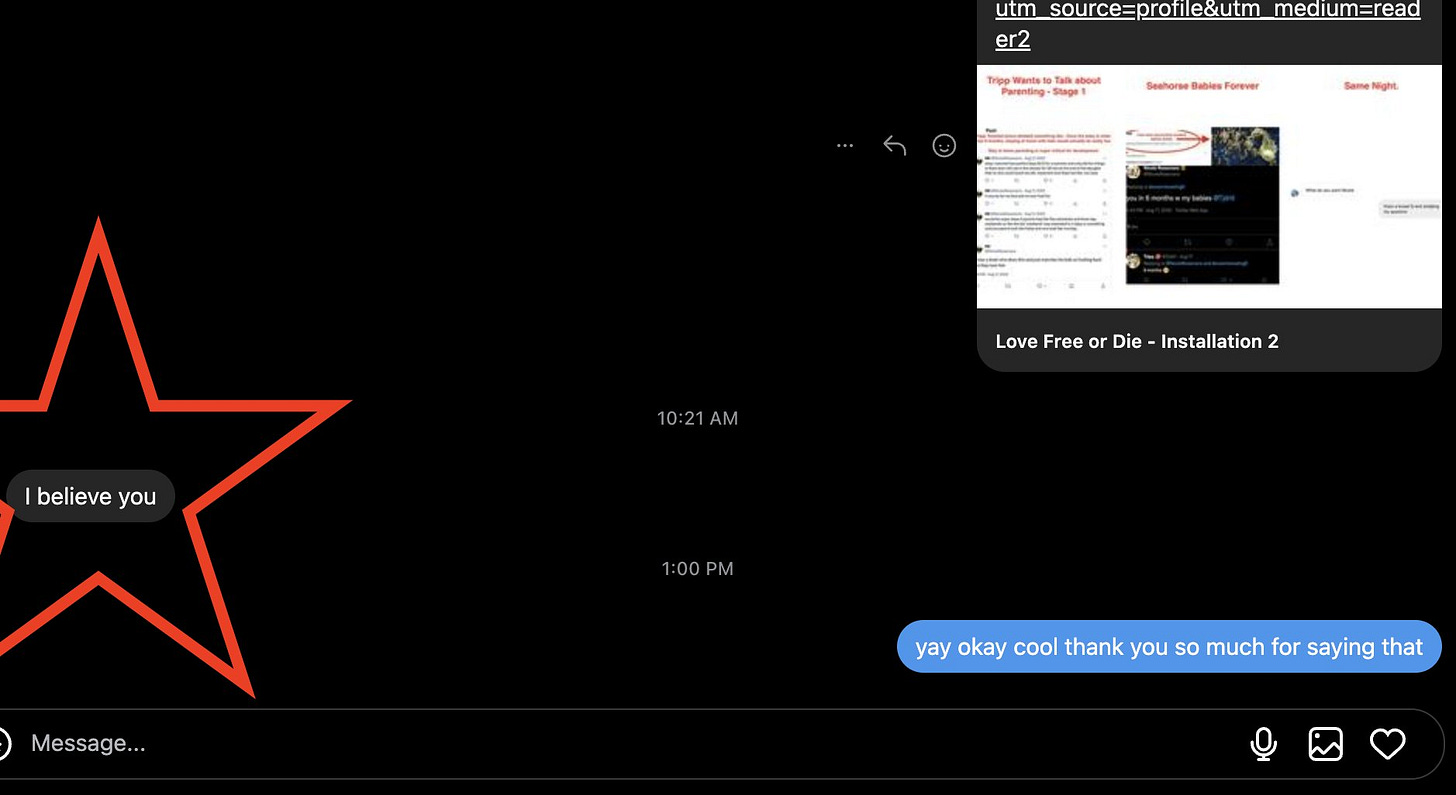Love Free or Die - Installation 3(read the screen shots)
An account of true love, out of frame and with some context
What do humans need to be okay?
There is a common meme that circulates around twitter that’s a play on Maslow's Hierarchy of Needs. But do you know your meme and do you know your textbook psychology? It’s about what humans need in order to operate at different levels of functioning. It also points to human needs that can be manipulated or withheld to induce certain behavior.
When certain needs aren’t met, a person is motivated to any activity that will result in having those needs met.
**PEOPLE NEED PEOPLE AND FRIENDS TO BE OKAY**
If you deprive someone of communication with people they love, especially while they are deprived of other social outlets, this becomes, in my experience, commensurate in motivation with meeting physical needs like eating. Have you ever been too sad to eat because of heartbreak? I have. I’ve also been motivated to look totally nuts online and in front of my peers to be with someone I love in real life.
I begged Tripp not to taunt me with indirect communication. He wasn’t the first man to do this, and I love him. I’ll do anything to be with him. There are lots of ways to put pressure on someone to motivate action. You can deprive them of something to elicit an action. You can threaten them with a consequence if an action happens.
When Tripp stopped talking to me, my pain was real.
When he started posting on his twitter timeline and in replies things like this, I believed his pain about not being with me was real too:
No matter what tho, you have to try hard and take risk for love.
What constitutes communication between humans?
In the above example and for many to come, Tripp and I are communicating with each other in a non-traditional frame. There are several, more sophisticated examples that we will look at later. For now, the basic set up is this: One of us tweets or replies to a tweet about a certain subject. Then, within a reasonable time frame, the other person posts a response on the same subject. We’re going to talk about where we can look for meaning and communication (does it have to be in a DM window? Can it be in a tweet on main? Can it be in song lyrics? Lot’s of romantic tradition is contained in sharing music and making mix tapes. )
Here’s a (used to be) mutual with both me AND Tripp that agreed - song lyrics are really helpful and maybe even more precise in communicating emotion:
We’re going to look at math too. There are many ways to approach this, and several advantages to measurement in different terms.
Here is a partial list of our responses on twitter if you want to see more, but we’ll pull in screen shots here too. The most simple way to think about this is: If we weren’t texting each other, but I made a joke about ducks on twitter, and then you made a joke about ducks, that might be a random coincidence. But, if I then made a joke about hands and you made a joke about hands, and then I joked about french-fries and then you joked about french-fries, and then I made a joke about butterflies and you made the same joke about butterflies, then it would be pretty likely that you were reading my twitter and responding - especially if these topics were not trending.
Let’s start with a basic math set-up. This makes it simple and easy to see, at the concept level. This isn’t rigorous, it’s a framework for approach:
The numbers here represent subjects. For instance, are Tripp and I both holding up a 6, or the subject “jokes about cunnilingus being a chore and eating vaginal bacteria”? If we both are, it’s considered a match - 66.
Most of the following examples are first Nicole (me) and then Tripp, in terms of order of response. The times are referenced here to show causality. I say it first, then Tripp responds, because he read my twitter and wanted to talk to me.
The math also shows us that this is not a coincidence. If this happened a few times, it would be very easy to think that it might be random. However, the chances of the same two people tweeting about the same subjects in a small time frame over and over again in the same order become very small. It means that we are talking to each other, not just tweeting about similar subjects by chance.
The easiest to see examples for most people seem to be the jokes we make. Below are a few to consider. There are many examples of this, these are just a few to grok the concept of the way we communicate..
Eventually, this same pattern can be expressed not just on twitter, but with additional platforms like pinterest and spotify. Here is an example (arrows showing time sequence) with both twitter AND pinterest. Following roughly the same (very inappropriate) joke:
(yeah I really DON’T think I’m black)
Some people see match once or twice, and think of the twitter algorithm doing magical things. That’s fair. That’s also why we showed many examples that take human processing to match (not an algorithm. also these examples are not trending in general. It’s just me and Tripp, FTMP, talking about them)
A good example of human processing:
Some people read these examples and brought up a concept in statistics called nonsense correlation. Where two sets of data in time series correlate (move together) but are not casual - (not dependent or influenced by each other). A more sophisticated set up might be more compelling in proving that both Tripp and I tweeted about similar subjects in time, because we were communicating, and that it wasn’t random. Proving dependence between the two sets of data (my tweets and Tripp’s tweets) is key.
If we want to be like, super definite in this approach, it’s going to take a PhD level of inquiry and a really big data set - that I don’t have. Luckily, it looks like someone is on it! And I’m taking this to heart. Because it looks like Tripp’s PhD thesis (while still sort of broad..) is specifically focused on this exact problem and setup:
Of course, I’m not an expert, so I’m asking ppl that have domain knowledge and still looking for someone to give a credible opinion here..
The basic assumption, repeated below, seems at gut level conservative. Anyone that uses twitter can guess that it might be a 1/10 chance of tweeting about the same topic in the same few days as a mutual. And that it’s fair to use basic probability math to calculate the chances of this happening.
The less basic set up is this:
Tripp’s thesis looks like it’s describing this exact problem, with a focus on likely distributions useful here. (Subject frequency being very “non-stationary” and mean-reverting ones counting for like, % confidence in conversational/subject match.. ? Might be interesting to consider, given we both know/think we are communicating - how does that change what counts as communication. Again I’m def not an expert here)
Heated Debate
A lot of people have been telling me I’m a crazy stalker. But a lot of people also don’t give a fuck about people on the internet. To the extent that they try to cancel me in DM and in a witch hunt.
This is so rough, because it makes me question my own mind, and it’s also hard to keep fighting to be able to love.
Luckily there has also been strong support, with folks saying things like, “it’s fairly obvious what he’s doing [and he’s a genius]”:
100% of my friends IRL, and some of my followers, after reading the same list of tweets, believe we’re communicating. Examples from twitter, a friend that’s a sales girl with social skills, and two engineers (one that does language ML and a data scientist).
Anon follower on twitter:
Engineer IRL friend:
Salesgirl IRL friend:
Engineer IRL friend:
On of my best friends - but the one that's more likely to be critical than blindly supportive.. was sort of afraid to show her. <3 also now believes me
There are other ways to test for communication
In addition to proving conversational match in time sequence, with lots of examples and math, we can inquire about information being passed between parties that would not be available otherwise - and that can be tested.
To show that, let’s first show a more “out of frame” example of communicating - using Spotify song titles. The easiest to see is a playlist made by Tripp.
Read the song titles down to see the story and the joke:
Often, using this type of framing is imperfect. There is often noise.. To show noise, it is labeled visually here, again in the same easy to see example:
Context also helps us to identify meaning within noise and ambiguity. The context of the next example was, I had broken up with Tripp for a ~month, and then reached out and let him know that I sort of wanted to get back together. With a very passive aggressive comment about how he “wanted to be single on his birthday”, because he wasn’t fixing the thing I asked him to.
The information passed is about his location and change in location at a given time. He was in Texas for his birthday and birthday weekend, and then left Texas to go to Europe right after. We tested this, and it was true. This information was not available on his twitter or publicly anywhere at the time I declared it. He was using Spotify to relay information. Definitely.
Context and extra information: (a point to be made later is, there is information available about relationship status for both me and Tripp. We both appear to be single and committed at the same times (we break up a few times) through out the course of a year). Trad Hoes is an all girl group chat on twitter that I’m sharing this with:
Location Info:
Final context. Another note, the term “Dylan” might be considered noise, it also may be read phonetically. This is a slightly more complicated example, but phonetic communication is necessary if you only have sound and not that hard to read.. An example of the CIA addressing phonetic variation in communications is included below.
Phonetic information not unheard of ..
This is a sort of more simple example.. here is another one, using song titles and one answer that’s sort of a mix of phonetic meaning w a little noise (Virginia = being a virgin) in the context of, answers to a question: whats hot if you like her and creepy if you don’t like her? (Tripp’s immediate Spotify answer - the artist he was listening to 5 min after I posted this question) There’s also, broken window serenade, and bury my bones.. both additional answers to that question.
Another way to measure communication is to look at times Tripp and I were either both single, or both in a committed relationship.. (the same relationship).
There were many examples of this, he always correlated with me. Some have since been deleted. The first example contained one of our inside jokes, so I took it to heart and assumed his commitment was for me. Examples of Tripp and I being Single/Committed at the same time:
Inside joke that he used to commit:
The commitment convo:
It’s important to note that this relationship has been very stressful for both of us, because of not being able to communicate directly.
It’s been very rocky. But also passionate.
Break up with him (since deleted) right after new years.
Getting back together..
The time I broke up with him again via text and then he was single..
Brake up with him bc he won’t stop talking to girls I hate on twitter:
Getting back together just before his birthday:
Again, this is a very very stressful situation and we want to be in love. Some people think he’s being cruel, and both Tripp and I basically say, nah it’s just a really hard place to be.. Tripp pointing to - “a lot of incredible relationships end due to a lack of nervous system capacity within conflict ~ rather than a lack of love or being not the ‘right person’”
Both of us are probably pretty strong for putting so much into staying positive through this, and Tripp is being brave to show people what we’ve been going through on Twitter:
We’re not OKAY. but.. does kink help us?
Going this long without seeing each other and with no sex is fucked. But we actually have had some pretty intense moments together.. see next post for the fire. ;)

